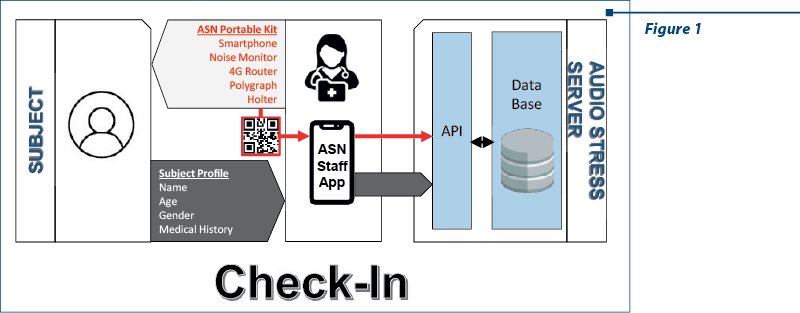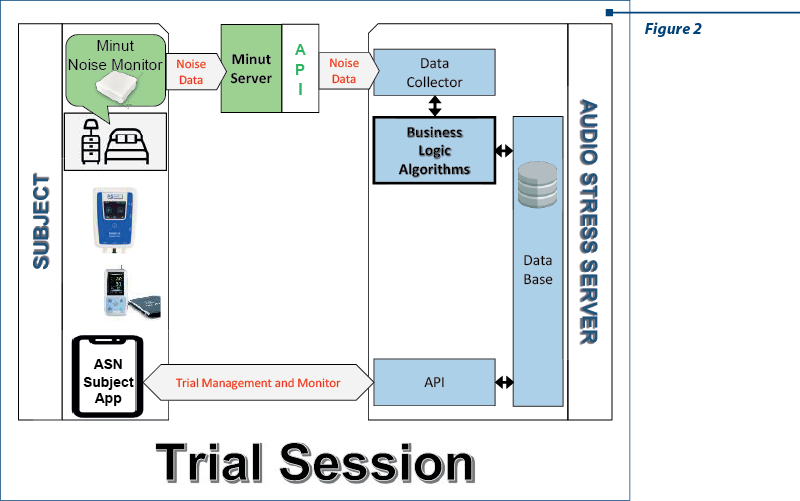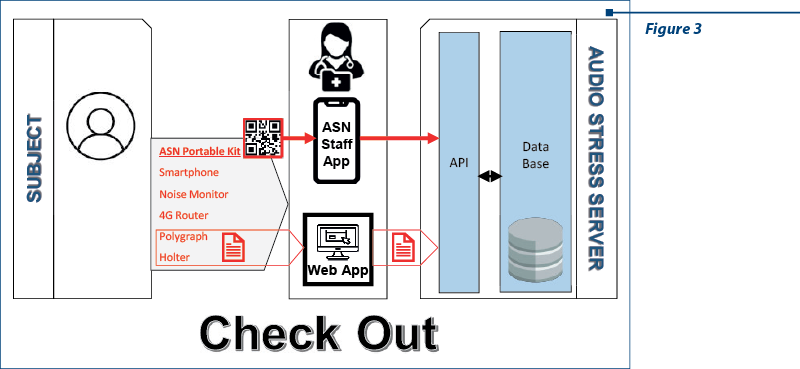Sleep plays a critical role in maintaining overall health and well-being. Numerous factors can disrupt sleep, including environmental noise. The advent of mobile applications has enabled the development of innovative solutions to address this issue. This article explores the health benefits of AudioStressNotifier, a noise monitoring app designed to identify the effects of disruptive noises that can adversely affect sleep quality. Through a comprehensive review of existing literature and a small-scale experimental study, we evaluate the potential of this app in improving sleep patterns and overall health.
The health benefits of AudioStressNotifier: an innovative noise monitoring app and its impact on sleep
Beneficiile pentru sănătate ale AudioStressNotifier: o aplicaţie inovatoare de monitorizare a zgomotului şi a impactului acestuia asupra somnului
First published: 24 noiembrie 2023
Editorial Group: MEDICHUB MEDIA
DOI: 10.26416/ORL.61.4.2023.8962
Abstract
Rezumat
Somnul joacă un rol esenţial în menţinerea sănătăţii. Numeroşi factori pot perturba somnul, inclusiv zgomotul din mediul înconjurător. Apariţia aplicaţiilor mobile a permis dezvoltarea de soluţii inovatoare pentru a aborda această problemă. Acest articol explorează beneficiile pentru sănătate ale AudioStressNotifier, o aplicaţie de monitorizare a zgomotului concepută pentru a identifica efectele zgomotelor perturbatoare ce pot afecta negativ calitatea somnului. Printr-o analiză cuprinzătoare a literaturii de specialitate existente şi un studiu experimental la scară mică, evaluăm potenţialul acestei aplicaţii în îmbunătăţirea tiparelor de somn şi a stării generale de sănătate.
Introduction
Sleep is a fundamental physiological process that is essential for the restoration and proper functioning of the body and mind. However, modern living environments are often rife with noise pollution, which can disrupt sleep and negatively impact health. The AudioStressNotifier app was developed to address this issue, utilizing cutting-edge noise monitoring technology to improve sleep quality.
New technologies and the growing demand for quality healthcare and regulatory influences are the main trends in the traditional global healthcare market in the coming years, the Deloitte 2019 Global Healthcare Outlook study shows. At the same time, an aging population and increasingly prevalent chronic diseases require additional funding, with an estimated global growth rate of 5% annually by 2022.
But the rising costs to health insurance systems and public budgets can be mitigated through the use of technological breakthroughs, with more and more companies focusing in recent years on providing cheaper, more efficient and innovative equipment and products(1).
For these reasons, there is a clear need to invest in both innovation and digitization, which facilitate a better use of data in both research for personalized healthcare and medicines. In a study, Deloitte have analyzed global innovations in the industry in various reports, trying to find out which ones are most likely to help improve services, lower costs and transform healthcare over the next 10 years.
According to the EEA’s Environmental Noise in Europe 2020 report, environmental noise, in particular road traffic noise, continues to be an important environmental problem for millions of people in Europe, affecting their health and well-being. Around 20% of Europe’s population (or approximately 100 million people in Europe) is exposed to long-term levels of noise that are harmful to health. The data also show that policy targets on environmental noise have not been met. In fact, based on our projections, the number of people exposed to noise is unlikely to decrease significantly in the future due to urban sprawl and increased demand for mobility.
Literature review
Numerous studies have linked noise pollution to sleep disturbances and subsequent health problems. Chronic exposure to environmental noise has been associated with reduced sleep efficiency, increased awakenings during the night, and even sleep deprivation. Furthermore, these sleep disturbances have been connected to various health issues, such as cardiovascular disorders, cognitive impairments and mental health problems(2).
Many people do not realize that noise pollution is a major problem affecting human health, including their own. Of course, the number of premature deaths associated with air pollution is much higher than for noise pollution. However, noise seems to have a greater influence on indicators of quality of life and mental health. In fact, according to World Health Organization (WHO) findings, noise is the second biggest environmental cause of health problems, after the effect of air pollution (particulate matter)(3).
In response, the EEA and the World Health Organization have set targets for the maximum noise levels to which Europeans should be exposed. They recommend night-time levels of no more than 40 dB (a third of EU citizens currently experience 55 dB) and 65 dB during the day. Some municipalities are struggling with this issue and have set restrictions on noise levels, for example for evening events.
Long-term exposure to noise can cause a variety of health effects, including discomfort, sleep disturbance, adverse effects on the cardiovascular and metabolic systems, and cognitive impairment in children. From the analysis of current data, we estimate that environmental noise contributes to 48,000 new cases of ischemic heart disease and 12,000 premature deaths annually. In addition, we estimate that 22 million people suffer from high chronic discomfort and 6.5 million people suffer from severe chronic sleep disturbance. According to our estimates, 12,500 school children have difficulty reading because of air traffic noise(4).
Anxiety is a psychological and pathophysiological state induced in both animals and humans by stressors, consisting of fear, nervousness, and biochemically related to the balance of serotonin and dopamine. However, there are some environmental factors that remove anxiety and help subjects relax. One of them is music(5).
Numerous studies have been conducted, showing the effects that music has on the psyche and beyond. Intubated and mechanically ventilated patients had statistically significantly lower anxiety scores than those who were not exposed to music, cancer patients waiting for radiotherapy had lower blood pressure levels if they listened to music, and patients undergoing dialysis had significantly better treatment outcomes. In this study, we evaluated whether sounds increasingly used nowadays have the same beneficial effects. We observed that rats from mothers exposed to relaxing sounds performed slightly better than rats from mothers not exposed to any sound stimulus, but there was no statistically significant difference(6).
Studies show that people who already have hearing impairment and continue to work in noise are more affected than people with normal hearing. They respond more poorly to attention tests (tests consisted of mathematical calculations they did at work, ability to memorize words, ability to read and understand text) and have higher levels of urinary catecholamines and salivary cortisone. An interesting part of the study was that, for a period of time at the beginning of the study, those with normal hearing exposed to stress performed better than those with hearing loss or those not exposed to noise. One possible explanation could be the more intense motivation and increased attention. For people working in noise, there have been many studies that have tried to quantify the effects of noise stress in some way. One of the factors measured was salivary cortisol, a marker for stress, which appears increased in all noise workers(7).
Understanding AudioStressNotifier
AudioStressNotifier (ASN) software framework is composed of a server-based component and two android OS applications that are embedded in the smartphones of the trial staff and in the smartphones of the trial subjects, respectively.
During a check-in procedure, each subject is registered and receives an AudioStressNotifier portable kit that he takes home to undertake a trial session. This portable kit is composed of: a smartphone embedding the subject specific app of the ASN software framework, a Minut Noise Monitor capable of regularly reporting the environmental noise level if provided with a valid Wi-Fi connection, a 4G router acting as Wi-Fi hotspot for the noise monitor, a Holter that records the electrical activity of the heart over a previously defined timeframe, and a Polygraph that records the blood oxygenation and the sleep patterns over a previously define timeframe. Both the Holter and the Polygraph are locally storing their recordings.
After each trial session, the subject returns the portable kit to ASN staff for proceeding to a partial or final trial check-out operation. During this check-out procedure, the ASN staff will retrieve the locally stored Holter and Polygraph recordings and upload them to the server embedded database using a dedicated web application (part of the ASN software framework server-based component). To ease the check-out operations, the staff dedicated mobile app includes a check-out component that provides real-time trial status in terms of recordings present on the server-based database for a certain subject (noise monitoring, Polygraph and Holter).
The main role of the subject dedicated mobile app is that of a portable kit orchestrator. It is embedded in the smartphone of the portable kit that is provided to the trial subject during a check-in procedure and it is acting as an HMI (human-machine interface) that allows the subject to both trigger and monitor a trial session.
Moreover, another key role of the portable kit smartphone is to emulate a controlled noise level environment. During the check-in process of each trial subject, a target noise level is defined for the night trial session where the subject sleep environment is a noisy one. The emulation of this noisy environment is done by integrating an automatic regulation loop of the white noise generated by the smartphone that embeds the subject dedicated mobile app. This loop is taking profit of the regular noise level reporting done by the noise monitor to incrementally adjust the sound level of the smartphone.
Staff dedicated mobile app is embedded in all staff smartphones to allow the staff to both enroll new subjects, monitor their activity during their trial enrollment period, and properly do the subject check-out.
Moreover, this ASN framework app embeds a medical analysis dedicated component that allows to introduce and store the conclusions obtained by analyzing the medical parameters recordings made for a certain subject during the different trial sessions.
Server-based component is composed of the following building blocks:
Business logic algorithms capable of communicating with the Minut Noise Monitor API (application programming interface) to automatically record and store noise levels for the entire duration of a trial session.
Server-side embedded database is implemented to store and inventory all data specific to each subject trial session (either noise recordings, or all other medical monitorization data).
ASN API that ensures the correct data input and output from the database.
Web application acting as HMI that allows the staff to both upload medical recordings in the server-based database, as well as to download all recordings (noise and medical) specific to the trial campaign undertaken by a certain subject.
Discussion
AudioStressNotifier has the potential to mitigate the adverse effects of noise pollution on sleep quality. By proactively identifying and addressing noise disruptions, this app helps individuals achieve more restful and uninterrupted sleep, ultimately contributing to improved overall health.
Conclusions
The AudioStressNotifier app offers a promising solution to combat the negative impact of noise pollution on sleep quality and subsequent health problems. By leveraging smartphone technology and advanced algorithms, this noise monitoring app provides users with the tools to enhance their sleep patterns and overall well-being. Further research on a larger scale is warranted to validate these preliminary findings and assess the long-term effects of using AudioStressNotifier as a practical aid for better sleep hygiene.
Future directions
Future iterations of AudioStressNotifier could incorporate additional features, such as personalized noise profiles or internet connected medical monitoring devices capable of regularly reporting during the trial sessions.
Collaborations with sleep specialists and healthcare professionals may further enhance the app’s effectiveness in addressing sleep disturbances and related health issues.



Conflict of interest: none declared.
Financial support: none declared.
This work is permanently accessible online free of charge and published under the CC-BY licence.

Bibliografie
-
Basner M, Babisch W, Davis A, Brink M, Clark C, Janssen S, Stansfeld S. Auditory and non-auditory effects of noise on health. The Lancet. 2014;383(9925):1325-1332.
-
European Environment Agency (europa.eu). Health risks caused by environmental noise in Europe. https://www.eea.europa.eu/publications/health-risks-caused-by-environmental
-
World Health Organization. Environmental noise guidelines for the European Region. World Health Organization, 2018.
-
Hume KI, Brink M, Basner M, Vogel J. Effects of environmental noise on sleep. Noise & Health. 2012;14(61):297-302.
-
Griefahn B, Bröde P, Marks A. Autonomic arousals related to traffic noise during sleep. Sleep. 2008;31(4):569-577.
-
Ohayon MM, Roth T. Place of chronic insomnia in the course of depressive and anxiety disorders. Journal of Psychiatric Research. 2003;37(1):9-15.
-
Wilhelm I, Diekelmann S, Molzow I, Ayoub A, Mölle M, Born J. Sleep selectively enhances memory expected to be of future relevance. Journal of Neuroscience. 2011;31(5):1563-1569.